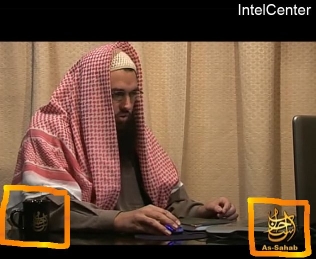The Big Picture
You don't have to believe in incipient singularities to recognize that 2028 -- just twenty years from now -- will bear very little resemblance to 2008.
A small cluster of rapidly-accelerating drivers promises to dominate the first quarter of this century. Each of these drivers, alone, has the potential to remake how we live; together, the likelihood of a fundamental transformation of our lives, our politics, our world, becomes over-determined. Moreover, these drivers are distinct but interdependent: each one exists and would be transformative on its own, but how it plays out -- and the choices we'll face when confronting it -- will be contingent upon how the other drivers unfold. Twenty years isn't a long time to make the needed changes to turn potential disaster into a new world; we have all of five US presidential terms -- maximum -- to completely transform, globally, every significant aspect of our material civilization.
These drivers will be familiar to anyone who has been reading my writing here at Open the Future, and previously at WorldChanging.
Climate Chaos: Twenty years is the outside limit of how long we have to make the global changes (in our energy grids, urban designs, transportation networks, agricultural processes, industrial processes, taxation policies, trade policies, etc.) required to avoid real disaster. It's also probably about right for figuring out which geoengineering strategies are the least likely to make things worse. We know what we need to do -- we simply need to do it.
Resource Collapse: Oil. Water. Topsoil. Fisheries. Seeds. Arable land. Copper. Food. Name a resource fundamental to the maintenance of our civilization, and it's probably at risk of collapse in the next two decades. All of these can be mitigated, managed or replaced in time; again, it's a matter of making the decision to do so. Some of the solutions will require transient sacrifice, but many will make our lives demonstrably better. Unfortunately, all require upsetting the status quo.
Catalytic Innovation: A number of potentially-transformative technologies have a real chance to show critical breakthroughs by the late 2020s: Molecular manufacturing; artificial general intelligence; synthetic biology; human augmentation biology. Individually and combinatorially powerful, how they emerge will depend on political, economic and cultural choices made today. As catalysts, they can reshape the tools we have to manage the other drivers, offering new pathways to succeed, and new models of risk.
Ubiquitous Transparency: The catalytic innovations change what we can do, but ubiquitous transparency changes what we can know. Sensors, cameras, networks, augmented reality, lifelogs, mirror worlds -- these change our relationship to each other, our communities, and our planet. These technologies are quite far along, meaning that in twenty years, systems for ubiquitous transparency will be deeply-embedded, mature and unavoidable. Whether they'll be one-way or two-way remains an open question.
New Models of Development: The 20th century model of global development has demonstrably failed, but nothing has yet emerged to take its place. Potential alternatives abound: leapfrogging, offering development through local technology innovation; Islamic renaissance, offering a non-Western vision of the interaction of state and religion; G20+, offering new rules of development by "embracing and extending" the old ones; Bollywood, offering culture as the new engine of development; copyfighters, offering a shot at breaking the rules for a greater good. Over the next twenty years, the relationship between the "core" and the "periphery" will be upended.
The Rise of the Post-Hegemonic World: Finally, the end of the American global hegemony without a clear alternative hegemon or set of hegemons signals a fundamental change in the structure of global politics. Major system shifts have, historically, been signaled by war; the presence of nuclear deterrence and fourth generation warfare as brakes on conventional conflict makes that outcome less likely. By the late 2020s, the new structure of the global system won't necessarily be in place, but its outlines will be coming into view. The United States may have accepted by that point that it's no longer the #1 power in the world, no matter how many missiles it still has. I wouldn't count on that, though.
My goal is to start talking over the next few days and weeks about how these intersect.
As always, this is meant not as a prediction but as a provocation. What happens as these drivers take hold depends upon our choices and our actions, and the potential remains for us to use these forces of history as a catalyst for building the kind of world we want. The capacity to do so rests upon an ability to recognize these forces, and to act on that recognition. We must not be passive victims of the future.

 Foreign Policy has just published a substantially updated version of my article "
Foreign Policy has just published a substantially updated version of my article "




 Web-enabled personal medical information technologies have been a standard item in the futurist's scrapbook for a few years now. It's one of those concepts that's hard to imagine not happening: the demographic, technological, and market pressures for Internet-mediated health technologies aimed at the elderly have terrific momentum.
Web-enabled personal medical information technologies have been a standard item in the futurist's scrapbook for a few years now. It's one of those concepts that's hard to imagine not happening: the demographic, technological, and market pressures for Internet-mediated health technologies aimed at the elderly have terrific momentum.
 Once again,
Once again, 
